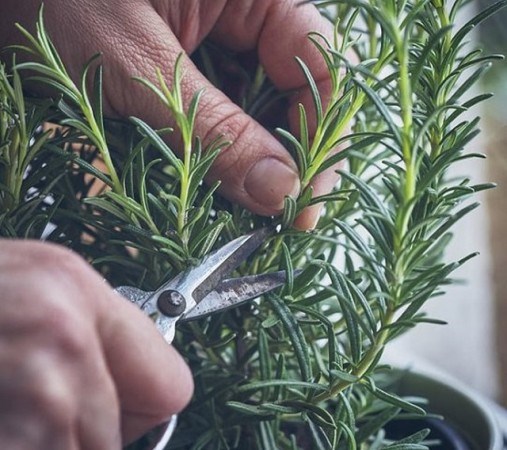Last week the focus was about growing herbs indoors. I wrote about how great (and necessary) it was to continue to garden indoors and about the supplemental lighting that is necessary to grow our favourite culinary herbs. Although I never mentioned it directly the herbs mentioned are easily started by seed. In late March and early April of 2020, there were a series of articles on how to successfully start seeds and I hope that you had the pleasure of reading those articles as they should help you with starting anything, including herbs from seed. This type of propagation is referred to as sexual propagation.
Today, I would like to focus on asexual propagation. This is a method of propagation that is also referred to by some as cloning plants and is the preferred method of propagation for many plants commonly grown within the horticultural industry. Each part of a plant will be genetically identical to the parent plant and will not display the diversity that occurs when growing plants from seed. Please note each plant has specific parameters to be grown optimally and in relation to herbs this is most definitely the case. Some plants prefer to be propagated by taking a piece of the leaf, the stem, a bud or even a root. There are also variations of the maturity of these plant parts, the time of year you remove the plant part from the parent plant and how you successfully grow that plant part into a new plant.
A couple of my favourite herbs are not able to be successfully grown by seed so for those of us who wish to grow more of these herbs, we need to resort to a different method of propagation. Today, we will talk only about taking cuttings from the upper parts of the plant that includes both a part of the stem and part of the leaves.
General directions for taking cuttings are to select a healthy plant to take a cutting from. Take a four- to six-inch piece of stem with the leaves attached ensuring there are a number of nodes present where the current leaves are growing. Use scissors, secateurs or a sharp knife that is clean and remove all but two of the leaves at the top of the stem and gently pinch back the very top leaf or tip of the cutting. By removing the apical meristematic tissue (the top leaf or point of growth) will cause a number of internal processes that will help the plant to more quickly grow new roots and to then continue growing stems and leaves. By removing the lower leaves, the nodes where the leaves were once located are usually the easiest point for new tissue to develop. Some plants can at this point be placed in a container of water that keeps the naked stem below the surface or alternatively can be placed in damp soilless mix, vermiculite or peat moss. It is a good idea to tent some plastic over the cuttings to retain the humidity. Place in bright light and monitor the cuttings until you see roots and new growth. Gradually remove the humidity tent and, if necessary, plant in growing media.
Hanbidge is the Lead Horticulturist with Orchid Horticulture. Find us at ; by phone at 306-931-4769; by email at [email protected]; on facebook @orchidhort and on instagram at #orchidhort.




